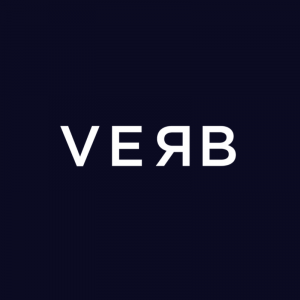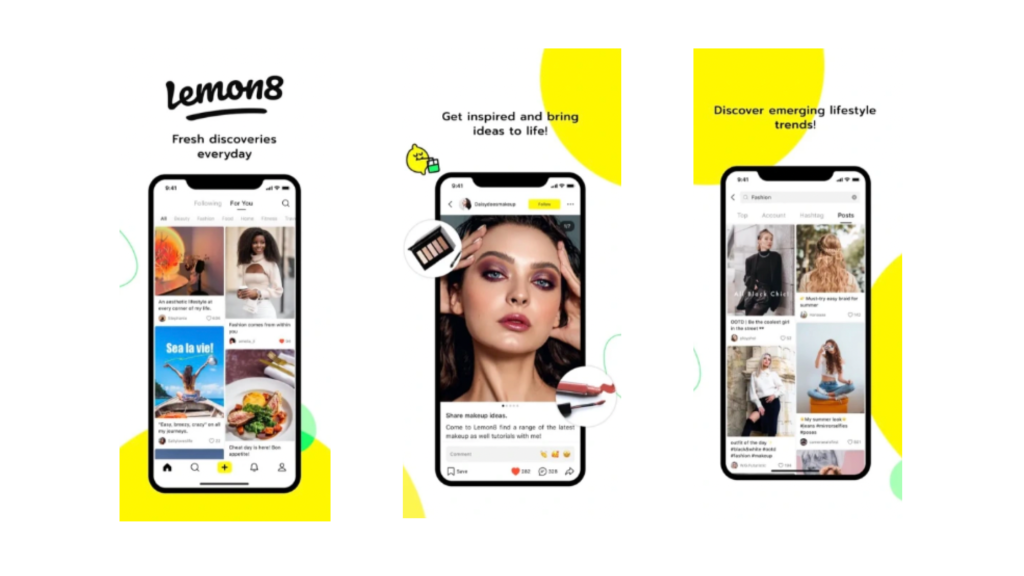Is Lemon8 worth the hype? We explore the top social media platform developments of 2023

Reading time: 5 min
Is Lemon8 worth the hype? We explore the top social media platform developments of 2023
A lot’s happened in the first few months of 2023 with social media. A new competitor has emerged in Lemon8 and BeReal, last year’s darling, seems to have disappeared from public consciousness. So, what will the next seven months and beyond look like and how will that affect the luxury sector?
In this article, we explore:
- The buzz around Lemon8 and whether you should be caught up by it
- Twitter’ future post Elon’s takeover
- How Facebook and Instagram seem to have got their mojo back
- Why Pinterest might become a luxury destination in the next 12 months
Should luxury brands market on Lemon8?
Lemon8 is a social media app designed primarily for content curation and distribution to other users. Analysts have likened its photo-sharing functionality to Instagram and its idea sharing to Pinterest. Its focus is on lifestyle content, particularly food, fashion, health and travel. It also allows users to post long-form written content too (reminiscent of Tumblr?). The amount of interaction users can have with each other is limited at the minute although, as a platform for discovering content, it’s very well-executed even in its current “beta” form.
Chance Townsend, writing for Mashable, describes its interface as having “the pleasing, curated aesthetics of old Instagram” before the platform changed its UI to mimic TikTok in around 2016.
Lemon8 controversy and uncertainty
Although Lemon8’s publisher is listed as Singapore developer Heliophilia Pte. Ltd, it operates out of the same office in that country as ByteDance, TikTok’s owner.
While there’s no evidence that Lemon8 can be used to spy on users, it reportedly shares the same “recommendation engine” algorithm as TikTok. Its popularity in the U.S. has grown rapidly of late however there are concerns for its long-term future because of the RESTRICT Act. This is legislation that could ban foreign apps considered a national security risk and is widely seen as targeting TikTok in particular.
Lemon8 interesting facts
Insider reported that the app has set up a team in New York to attract content creators to the platform and compensate them. That’s because, at time of writing, there is no ads platform on the app.
You can create your own organic content for Lemon8 but the only current real opportunity to gain wider and targeted exposure is with influencer marketing. Or rather micro-influencer marketing as there are few accounts with significant follower numbers yet.
There are few rules of thumb about placing your brand on Lemon8 we’d recommend, specifically:
- Find out what the most popular content is and why: Engagement rates are a thing on Lemon8 so there is value in finding out which content relevant to your brand is resonating well with users.
- Experiment: This is all brand new and no-one’s quite sure how to exploit Lemon8 for commercial opportunity yet so try different approaches to see what gain traction.
- UGC x influencer marketing: Despite the relative lack of scarcity of influencers, the platform’s more niche and more intimate nature plus the fact that users browse on Lemon8 for extended periods would seem to suggest UGC will work particularly well, especially if fronted by a trusted content creator.
- Use hashtags: They’re important for content discovery on Lemon8 but be aware that there is a maximum of 10 hashtags per post.
- Optimise your bio: You have 80 characters to tell users about your brand and a call-to-action. You can upload a photo or your logo as your profile image.
- In-built design tools: Lemon8 has some interesting templates and design tools you can use. They may not fit your brand guidelines but they might work for any lo-fi campaigns you’re running.
Our verdict on Lemon8 and TikTok’s future
Lemon8 is interesting and we’ll be keeping an eye on how the platform develops in the coming months. While the world may not need another Instagram, its Pinterest-like functionality is of interest to us.
Pinterest is perhaps the most underrated and underused marketing channel for luxury products, particularly given its demographic skew towards middle-aged, educated higher earners.
We have genuine concerns for the future of TikTok. Montana became the first U.S. state to approve a full ban on TikTok, making it illegal to download or offer for download the app in the state with penalties of up to $10,000 a day for a violation. Canada, India and the UK have also banned TikTok from government devices over data privacy and national security concerns.
There is a reputational risk here for luxury brands, particularly if the idea takes hold among the general population of the country that the app is an existential threat to privacy. Be very careful.

The future of Twitter
Everything’s a bit up in flux with Twitter since Elon Musk’s takeover. Things are announced then unannounced so here’s what we (think we) know:
- Blue tick verification: Twitter now charges £8 a month for the blue tick. Given the number of parody accounts on the platform, it’s probably wise for luxury brands to pay the fee.
- Twitter Blue: This is a premium monthly subscription service offering new themes, a bookmark option, undo button and more currently being trialled in the US, Canada, Australia, and New Zealand.
- Edit button: Currently only available for Twitter Blue users, you can edit tweets within 30 minutes of publishing. This feature could be useful for fixing errors or making updates on time-sensitive campaigns or promotions.
- Video carousel: By swiping up as on TikTok, users will be able watch popular videos from their feeds punctuated by paid advertising. Given the pull of video advertising, this could present a real opportunity for luxury brands.
- Increased character limit: The current character limit is 280 but Elon Musk recently tweeted that this could go up to 4,000. This would allow for greater sharing of more detailed information on brands or products although it’s yet to be seen how much long-form content will engage users.
- Twitter x PayPal: Elon Musk made his first fortune in PayPal and he’s mooted the idea of turning twitter into a bank. His idea would be to enable users to send money anywhere in the world instantly and in real-time. This raises the possibility of on-platform transactions, a growing trend across other social media platforms.
Facebook and Instagram in a time of upheaval
Meta, the parent company of Facebook and Instagram, announced that it will phase out the use of Shops that don’t currently have checkout. From August 10, 2023, shops that direct people to e-commerce sites to complete purchases, rather than allowing people to make purchases directly through Facebook and Instagram, will no longer be accessible. The shopping tab also looks likely to be removed from the Instagram navigation bar and replaced by the “Reels”.
Part of the platform’s drive to build a “seamless shopping experience” is to force itself on brands as the sole checkout provider (much like PayPal was on eBay for over 10 years). If you don’t have a checkout-enabled shop, you’ll be denied access to organic product tagging in posts and creating new custom/lookalike audiences derived from people who visited a Shop.
Meta finally seems to have given up on the metaverse and has been focusing instead on AI and cost-cutting recently. They’re also expanding the monetisation of Reels, its short-form video feature, to keep users engaged for longer because the volume of new Reel content creation has declined in recent years.
Creators will now be able to build online communities with tools that help them derive insights from their most engaged fans to create more compelling content. They’re also building in templated posts to allow creators thank followers for their support. Reels, just like TikTok has been trying to do, wants to incentivise its creators to encourage them to create more for them and not concentrate as much on YouTube. This freer flowing cash to creators may result in higher quality content leading to interesting new partnership opportunities for luxury brands.
Pinterest changes coming soon
Earlier, we mentioned how Pinterest seemed to be overlooked by many marketing teams, including luxury marketing teams, despite its high-earning, intelligent demographic. In order to raise the profile’s platform a little more, Pinterest CEO Bill Ready has announced the platform’s integration of AI and shoppable media features to create a “digital bazaar”.
Mr. Ready notes that over half of the platform’s users view the site as a shopping destination even though the platform does not make it particularly easy for them to shop. He promised that, unlike how he saw other AI integrations on social media platforms, its presence on Pinterest would be “additive to people’s lives, not addictive”.
Their current “shoppable” features include the ability to search, merchant catalogues and a collage service. It’s focusing on shoppable videos and planning to work with creators, brands and publishers like Dotdash Meredith and Condé Nast Entertainment.
Mr. Ready described the next 20 years of ecommerce as involving the “joyful part of shopping, the inspiration, the discovery”. This is a development worth paying attention to as it could become much easier for target consumers to close the gap between discovery and purchase.
The future of social with VERB
There’s a lot happening in the social media space currently. Our three main takeaways for clients are:
- Be prepared for change: Twitter could be about to park its tanks on the lawns on it competitors with new features and monetisation opportunities for brands and content creators. Lemon8 is interesting as is TikTok but consider your position with both if they are subject to the regulatory scrutiny and regulation as this presents reputational dangers.
- Be prepared to share: Social media platforms want your customers to buy on their platforms meaning that you may never potentially “own” some of them depending on how they purchase from you. It also means sacrificing some margin on sales. We’ll be interested to see how luxury brands choose which products they keep exclusive to their sites.
- Embrace shoppable features: Given that advertisers can do nothing about changes to platform policies, take advantage of the new opportunities presented by improved ecommerce functionality on sites for the products you wish to promote on them. Pinterest’s aim to create a “digital bazaar” where users can be inspired, discover new brands, and make purchases without leaving the app is an exciting development.
What are your plans for social media in the next 18 months? Our team would love to discuss how we can add value to your social media strategies and campaigns. Get in touch with us here – we would love to hear from you!









